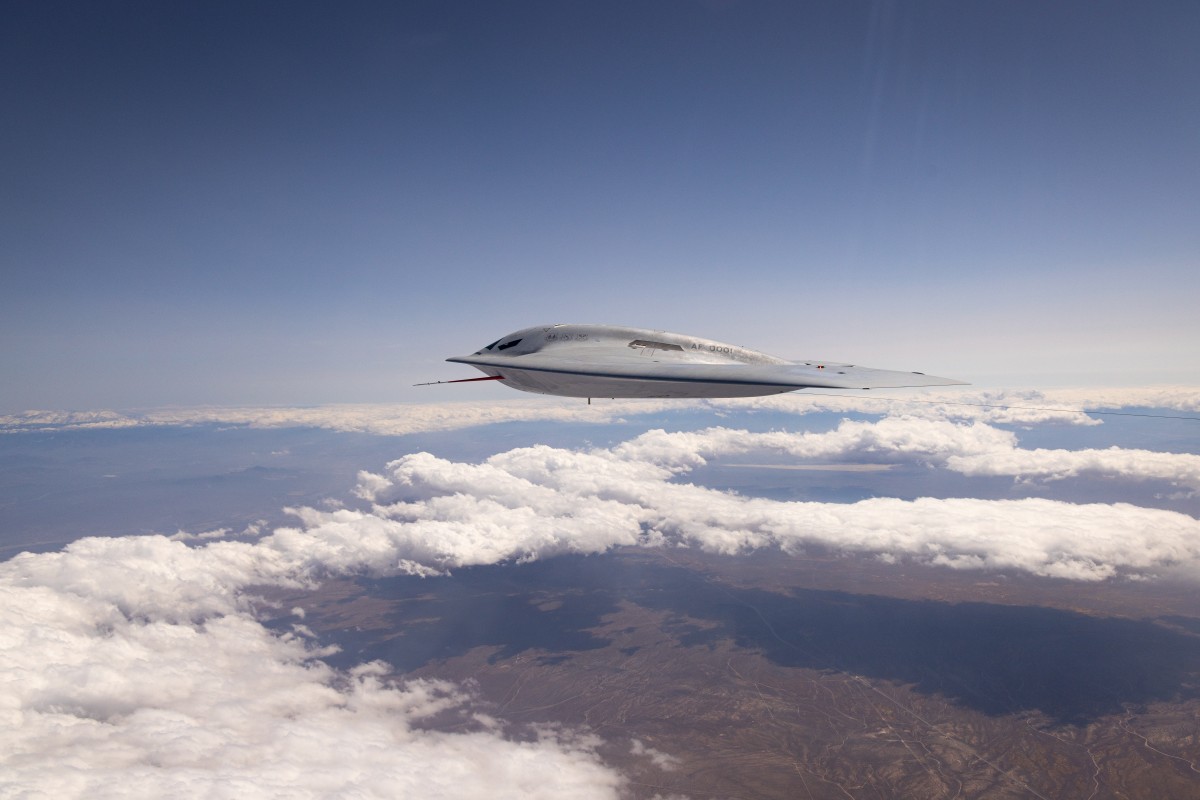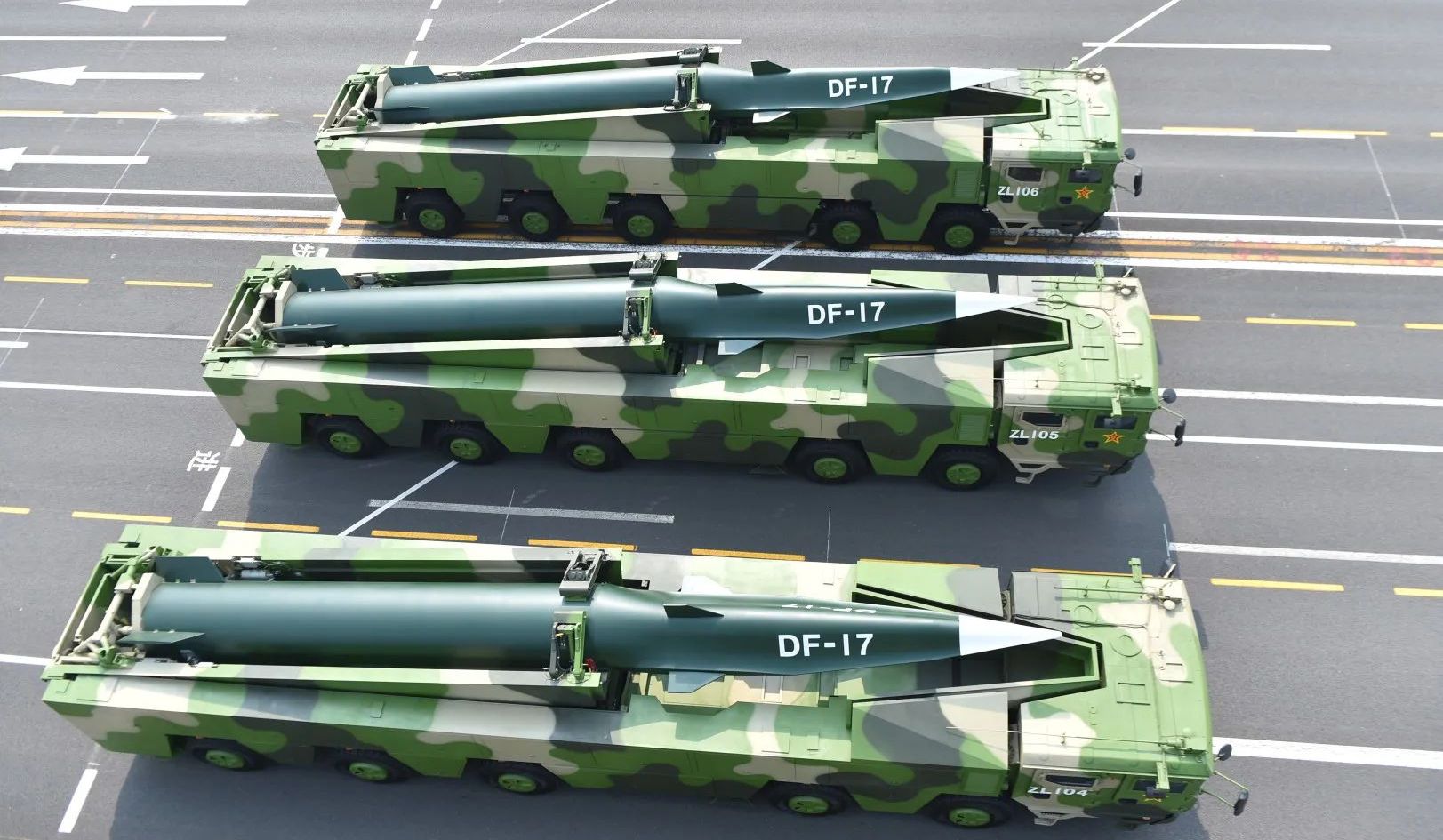In a world where technological supremacy can completely shift the balance of power, China has claimed to have unveiled a revolutionary advancement in radar technology.
Chinese researchers have unveiled a radar system so advanced it can track not one, but ten hypersonic missiles simultaneously, each hurtling through the atmosphere at a mind-boggling Mach 20 – that’s twenty times the speed of sound.
A team led by Professor Zheng Xiaoping from Tsinghua University’s Electronic Engineering Department claims to have developed a radar system with remarkable capabilities that can differentiate between real and false targets.
The newly developed microwave photonic radar boasts a detection range of over 600 kilometers. Its compact and lightweight design makes it suitable for integration into air-defense missiles or aircraft.
Has This Test Been Successful?
Ground-based simulations have shown impressive results regarding the system’s effectiveness. The radar demonstrated exceptional precision, with an error margin of only 28 cm (11 inches) when estimating the distance of a missile moving at nearly 7 km (4.3 miles) per second.
It also achieved up to 99.7% accuracy in determining the missile’s velocity, a feat previously considered unattainable. These findings were published in the Chinese journal ‘Optical Communication Technology’ on May 24.
What Makes This Radar Revolutionary?
The innovation lies in the radar’s use of ‘lasers’ for information transmission between key components at light speed. This approach overcomes the limitations of traditional radar systems, where high-speed electron movement can potentially damage circuit boards.
By incorporating photonics, the new radar can generate and process more complex microwave signals, enabling precise measurement of ultra-high-speed objects for the first time.
According to defense experts, this new Chinese radar technology is a response to the U.S. air-launched hypersonic missile tests conducted on Guam in March.
US Launches Hypersonic Missile In China’s ‘Red Zone’; B-52 Bomber Test-Fires AGM-183A ARRW From Guam
US Tested Hypersonic Weapons In Guam
The United States conducted tests of hypersonic weapons in Guam, aiming to reduce China’s lead in this technology. In March, a B-52 bomber launched an Air-launched Rapid Response Weapon (ARRW) from Guam in the Western Pacific.
Lockheed Martin’s AGM-183A ARRW, which can exceed Mach 5 (over five times the speed of sound), and the Hypersonic Attack Cruise Missile (HACM) are at the forefront of US hypersonic technology. Lockheed Martin reported successful completion of the test and readiness for rapid delivery to the Air Force.
Unlike ballistic missiles, which can be countered by advanced defense systems, hypersonic weapons’ agility and ability to change direction makes them more elusive targets.
The ARRW system comprises a rocket booster and a hypersonic glide vehicle carrying a conventional warhead. It is designed to strike time-sensitive, high-value land targets.
Hypersonic weapons present greater interception challenges than traditional ballistic missiles due to their superior speed and unpredictable flight paths, allowing them to bypass air defense systems.
Some Western military analysts viewed this test as a direct response to China, demonstrating the US military’s capability to target Chinese coastal cities with highly penetrative weapons.
A report from the Centre for Strategic and International Studies (CSIS) – a Washington-based think tank, highlighted that one of the Pentagon’s main concerns is developing a fire-control radar capable of tracking hypersonic targets with high precision for interceptor missile systems.
B-2 Spirit Bombers Return To Guam
In June 2024, the U.S. Air Force reintroduced B-2 Spirit stealth bombers to the vicinity of China for the first time in five years. Several B-2s were deployed to the Pacific for a joint exercise encompassing Guam, Palau, and the Northern Mariana Islands.
The B-2 Spirit is a formidable aircraft powered by four General Electric F118-GE-100 turbofans, each generating 17,300 lbs of thrust. These engines enable the bomber to achieve speeds of Mach 0.95 and cover over 6,000 nautical miles without refueling. Capable of reaching high subsonic speeds and operating at altitudes up to 50,000 feet, the B-2’s range extends to 10,000 nautical miles with aerial refueling.
The bomber’s distinctive design incorporates various subsystems into a streamlined, low-observable airframe. This configuration significantly reduces its acoustic, infrared, visual, and radar signatures, positioning the B-2 as one of the world’s most survivable aircraft.
B-21 Raider Nuclear Stealth Bomber
Not content with relying on past glories, the U.S. has also unveiled its newest piece on the board – the B-21 Raider. This next-generation stealth bomber is designed to carry both conventional and nuclear weapons, with the added twist of potential unmanned operation.
In May 2024, the U.S. Air Force unveiled the first images of its newest nuclear stealth bomber, the B-21 Raider. The aircraft is on set to replace the B-1 and B-2 bombers. The B-21 boasts a range of approximately 1,000 km/h (620 mph) and a top speed of around 600 mph (roughly Mach 0.78).

The B-21 recently completed its inaugural test flight. It’s expected to enter service within the next few years, marking the first addition of a new bomber to the U.S. fleet in about three decades. The previous bomber, the B-2, was developed during the 1980s and 90s.
The B-21 incorporates cutting-edge stealth technology similar to that used in the F-22 and F-35 warplanes. This technology minimizes the aircraft’s detectability through its shape and construction materials, enhancing its ability to evade adversary detection systems.
Hypersonic Missiles vs. Stealth Fighters: What Is The Biggest Threat To China?
In this aerial arms race, two technologies stand out: hypersonic missiles and stealth fighters. Hypersonic missiles, traveling at speeds that make the fastest fighter jets look like they’re standing still, present a nightmare for defense systems.
Hypersonic missiles operate at speeds of Mach 5 and above, with some reaching Mach 20. This extreme velocity significantly reduces reaction time for radar systems and defense mechanisms.
The US AGM-183A hypersonic missile reportedly achieves a maximum speed exceeding 15,000 miles per hour (24,000 km/h), equivalent to Mach 20. Testing this weapon demonstrates the US Air Force’s commitment to maintaining its strategic position in the Pacific region.
Another example of a Mach 5+ hypersonic missile is the Russian-made Avangard hypersonic glide vehicle. Moscow claims the Avangard weighs about 2,000 kg and travels at Mach 20–27, or roughly 32,000 km/hour.
Hypersonic missiles can perform unpredictable maneuvers and travel at varying altitudes, making it challenging for radar systems to predict their trajectory or detect them using traditional methods designed for lower-altitude targets.
Stealth fighters, on the other hand, rely on their ability to remain invisible to radars with a limited radar cross-section. While stealth fighters can maneuver, their flight paths are generally more predictable than those of hypersonic missiles, it is assumed.
Given the capabilities described for China’s radar system, differentiating between real and false targets among incoming hypersonic missiles at Mach 20 suggests a very advanced detection system.
In this aerial arms race, hypersonic missiles and stealth fighters represent two distinct threats. Hypersonic missiles, with their extreme speed and unpredictable trajectories, pose a significant challenge to even the most advanced radar systems. Stealth fighters, while slower, rely on their ability to remain undetected.

Conclusion
Two critical aspects emerge from this technological arms race.
Firstly, the strategic importance of seemingly insignificant Pacific islands cannot be overstated. Guam, Palau, and the Northern Mariana Islands, far from being mere tropical paradises, have become pivotal in the geopolitical chess game between China and America.
These remote locations serve as crucial outposts for military exercises, weapons testing, and power projection in the Asia-Pacific region. Their strategic value far outweighs their size, highlighting how even the smallest territories can play outsized roles in global security dynamics.
Secondly, the ongoing struggle between superpowers over hypersonic weapons and their countermeasures underscores a new era in warfare technology. As China unveils its advanced radar system and the U.S. pushes forward with hypersonic missile tests, we witness an escalating cycle of offensive and defensive innovations.
This race not only demonstrates the relentless pursuit of military superiority but also raises pressing questions about global stability and the future of conflict. The development of these ultra-fast, highly maneuverable weapons and the radar systems designed to track them may fundamentally alter the calculus of deterrence and defense strategies worldwide.
- Shubhangi Palve is a defense and aerospace journalist. Before joining the EurAsian Times, she worked for E.T. Prime. In this capacity, she focused on covering defense strategies and the defense sector from a financial perspective. She offers over 15 years of extensive experience in the media industry, spanning print, electronic, and online domains.
- Contact the author at shubhapalve (at) gmail (dot) com.




